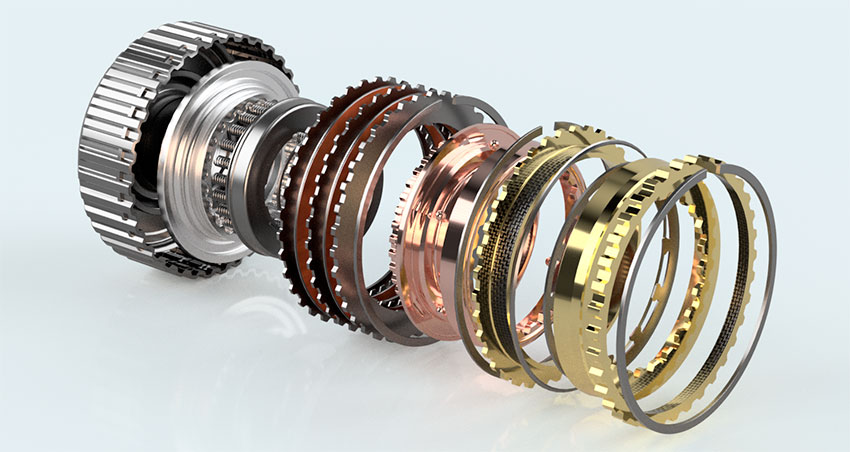

Though Dynax has been developing friction components for the automotive industry for almost 50 years, and in-wheel motor technology for the last decade, it is only the beginning of its plan to become an EV manufacturing specialist.

Price competition is getting tougher globally, but Japanese companies continue to have a large share of niche markets thanks to their multi-product, multi-functional production. One such business is Dynax, a specialist in various components for automotive, construction and agricultural vehicles.
“We aim to be the best company in the world at creating one-of-a-kind value and inspiring our customers. One-of-a-kind value means pursuing unique manufacturing that only we can do. In the clutch field, that would be friction materials,” says Kazuhiro Ito, President of Dynax.
Since its foundation in 1973, Dynax has researched, developed and designed products such as wet-type friction plates, clutch pack assemblies and synchronizer rings. However, with the transition from internal combustion engines to electric vehicles (EVs), manufacturers involved in automotive components like Dynax are having to respond and adapt.
“Countries are declaring themselves to be carbon neutral, and in order to achieve this, the trend towards electrification is inevitable. For our part, we have to develop friction materials so that they can be used in electric vehicles, and we intend to develop motors that can enter the EV market,” says Mr. Ito. “In terms of electrification, a motor is a motor but the mechanism is divided into two parts: e-Axle and in-wheel motors. Nowadays, almost 100% of car manufacturers, including Tesla, have gone for e-Axle. Our in-wheel motors are superior in that they are extremely low-cost and fuel-efficient, but they have not yet been adopted by customers.”
From the point of view of major car manufacturers, Mr. Ito believes that it will be difficult for in-wheel motors to be adopted now. However, with venture companies that make EVs currently springing up all over the world, inquiries for Dynax’s products in this field are racing in. “We have already arranged for an advanced development line to produce the motors so that venture companies can be confident that Dynax will supply them,” Mr. Ito explains. “The idea is to build a production line before the business is finalized. We want to show our customers that this in-wheel motor is a product to rely on.”
Not only are Dynax’s in-wheel motors more fuel efficient, they are also expected to improve the driving experience. “For one thing, you don't need any extra parts in terms of gears. And in the case of in-wheel motors, the advantage is that they fit directly into the wheels, so they are very compact in terms of vehicle construction,” says Mr. Ito.
In order to accelerate the transition towards electrification in the future, new research and development is inevitably required. Though Dynax has been developing in-wheel motors for 10 years, it is only the beginning in terms of its plan to become a component specialist for EV manufacturers.
“The next step is inverter control,” says Mr. Ito. “We are now working together with universities to develop this feature as well, and we are developing solutions where we combine the motor and inverter and sell the function from a single product. We are also developing a small wind power generator using our motor technology. This combines the issue of carbon neutrality in the future with the perspective of infrastructure development to create a small emergency power source. We are developing a small, rather than large generator, which will hopefully be launched in 2023.”
Normally, the blades need wind speeds of roughly 7.8 to 13.6 knots to rotate, but Dynax’s generator uses a small wind turbine with vertical blades that can rotate at a wind speed of 3.9 knots in order to generate electricity. The 7 meter-high turbine can be installed in dense urban environments, like a street lamp, and used for multi-purposes, for example to charge smartphones.
With the company set to celebrate its 50th anniversary next year, the Dynax CEO says the company’s long-term goal is sustainability. “We feel that we have to sustain ourselves, and although the existence of clutches will not disappear, we will push ahead in line with the move towards EVs,” he says. “The other issue is how to secure human resources. One of our initiatives on this front is to develop the local townships through social contribution to the community by recruiting people, and to attract people and promote recruitment activities from there. Specifically, we are trying to attract people by creating a wine business and have already grown 110 grapevines in Hokkaido. In 2025, we will build a winery and have finished planting 28,000 grape saplings on 20 hectares.”
0 COMMENTS